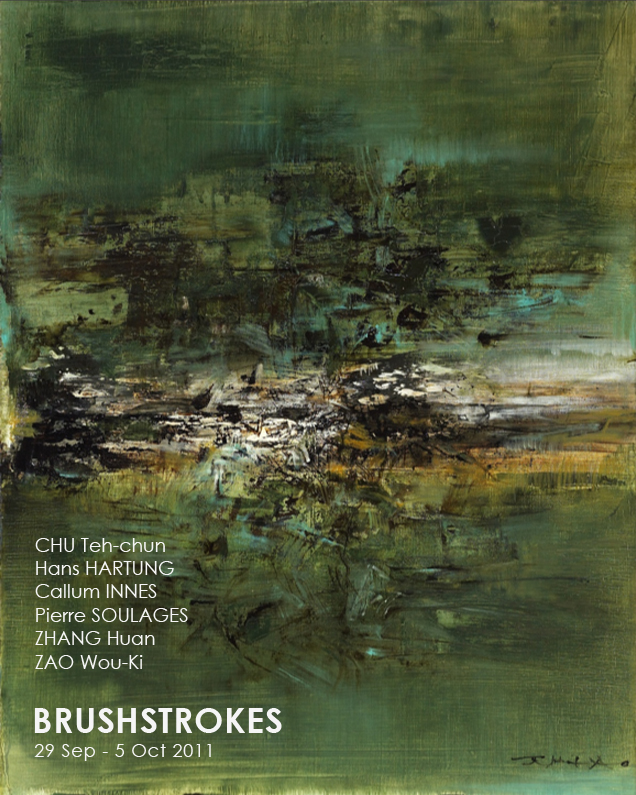Brushstrokes brings together a group of works by Western and Eastern artists and prompts a reflection upon their individual gestural nuances. Curated to instigate an appreciation of method as well as a notion of cultural exchange, the exhibition displays works by internationally celebrated artists Chu Teh-Chun, Zao Wou-ki, Zhang Huan, Callum Innes, Pierre Soulages and Hans Hartung.
Among the works included in the exhibition is Chu Teh-Chun’s ‘Rouge lourd et vert léger (Number 39)‘ (1959), an abstract composition of angular yet sinuous dark lines, multi-coloured sombre shapes, and a vividly orange-red background. In a similarly abstract vein, created by an artist of the same generation, is the work ‘6.4.62‘ (1962) by Zao Wou-ki, which presents a sea of fern, hunter and india greens, juxtaposed with hints of yellow, traces of white, and darts of black. Complementing the references in Wou-ki’s work to altering autumnal foliage, Zhang Huan’s ‘Grass No. 3‘ (2010) depicts a monotonal wave of grass blades, which alludes to the passing tide of summer and hints to the present time of harvest.
Employing a similarly monotonal palette, Callum Innes presents a series of monochrome paintings, which although abstract, contrast from the other exhibited works by embodying a clean linear simplicity. Such emphasis on the monochrome and linearity is also present in Pierre Soulages’ work, which is heavy in texture and created by the generous horizontal application of black paint. Its appearance, for the most part matte except for a band that has a slight sheen, brings us back to the harvest theme in Zhang Huan’s work, and recalls the linear formations found in farmland soil when a rake is passed through it to garner the preparation of crops.
Brushstrokes therefore brings together works by celebrated Modern and Contemporary artists from around the world under a thematic that extends beyond formalistic appreciation to the pluralism of painterly traditions. The works displayed are to be enjoyed both singularly and in unison, for each complements the other, ultimately introducing an exchange between cultures, techniques, and values.
Brushstrokes Group Show
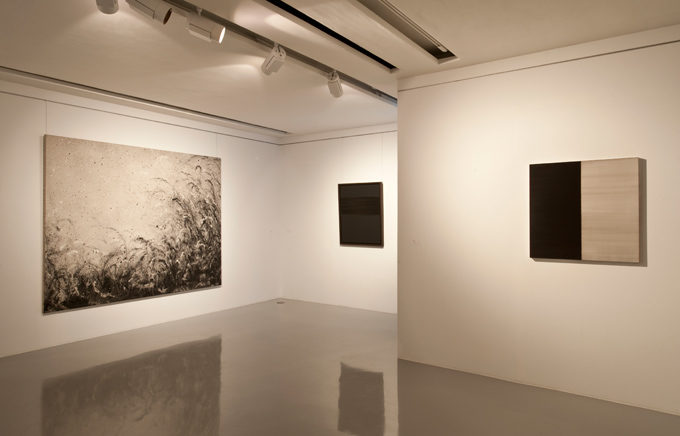
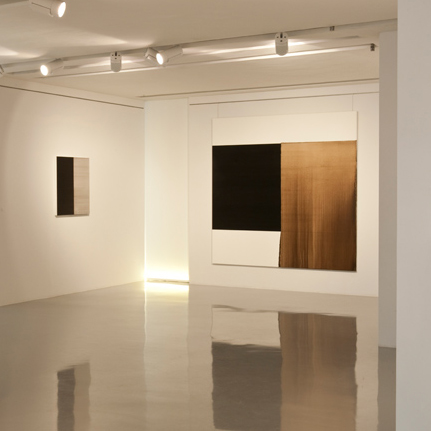

1959
Oil on canvas
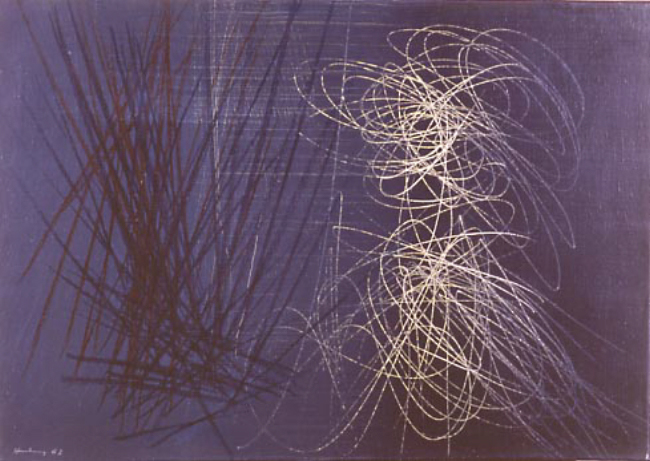
1962
Oil on canvas
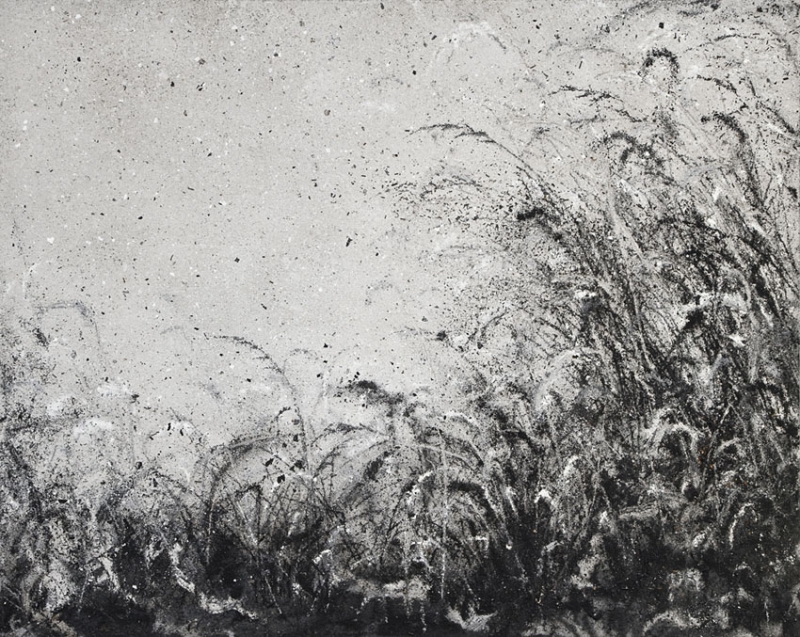
2010
Ash on linen
